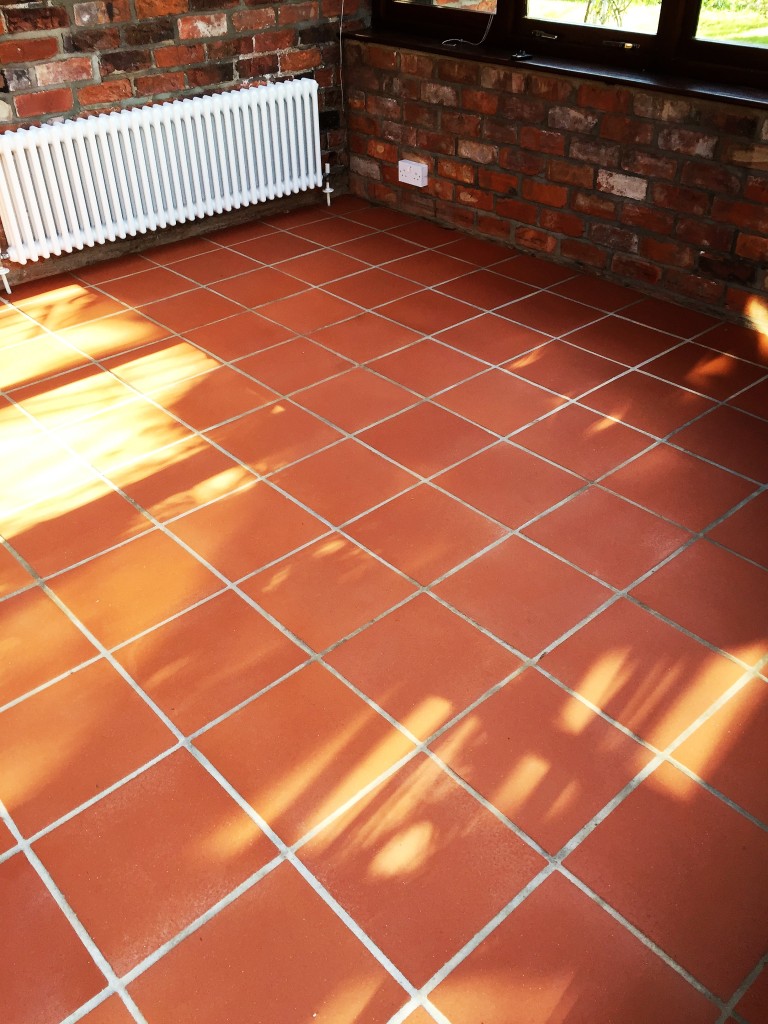Restoring the Appearance of Flood Damaged Tiles in Yorkshire
[ad_1]
Flooding in the UK seems to have become more frequent and devastating in recent years, with areas such as Cumbria and Yorkshire being among those that have been particularly badly affected. Of course, flooding hits many homes directly, causing often irreparable damage and problems that can last for years following the incident.
 |
 |
This property in Hessle had been damaged by the terrible flood that hit Hull in 2007. Nearly a decade on from the incident, the property’s Quarry tiled conservatory was still in a bad way, with what I believe to be salt deposits having built up on the surface of the floor. All in all, the floor had not fully recovered from the flooding, and was in need of a deep clean – both for the tile and the grout – and a fresh seal in order to be restored to its former glory.
The property owner called me to the property to conduct some spot tests to determine the results that could be achieved. The results were very promising so we booked in the job and got to work on the restoration.
Cleaning Flood Damaged Quarry Tiles
To begin the restoration, the floor was covered with Tile Doctor NanoTech HBU, a penetrating cleaner that utilise nano-sized cleaning particles, along with a small amount of Tile Doctor Remove and Go, a heavy duty remover used to break down old sealers, adhesives and paints. This solution was them scrubbed into the tiles using a 17” rotary machine and a black pad.

It was left to dwell for around 15 – 20 mins to work its way into the pores of the stone, before being scrubbed again. Given that the floor had not been treated to a proper clean in a long time, I repeated the process three times until happy that the tiles were in the best possible condition.

Dealing with Efflorescence
The second main part of the cleaning process involved rinsing the floor using Tile Doctor Grout Clean Up, which is an acid based product used to remove mineral deposits such as salt (also known as efflorescence) and grout smears. The floor was then given a thorough rinse to remove any trace of products and neutralise the floor before sealing, the floor was then dried as much as possible using a wet vacuum.
Sealing Quarry Tiles
Following this very through clean, the floor was ready for sealing. However, I did have to leave the floor for a few days to dry fully, as any excess moisture can upset the sealer.
Upon my return I checked for dampness before proceeding to see the tiles using two coats of Tile Doctor Colour Grow, which is a penetrating, colour enhancing sealer. The sealer penetrates into the pores of the stone to fill them and protect it against ingrained dirt.
 |
 |
The results were truly fantastic. The combination of a deep clean and colour enhancing sealer left the floor looking brilliant. You wouldn’t have been able to tell that the floor had once suffered from severe flooding. Needless to say the customer was very satisfied.
Source: Quarry Tile Restoration Service in Yorkshire
[ad_2]
Source link
